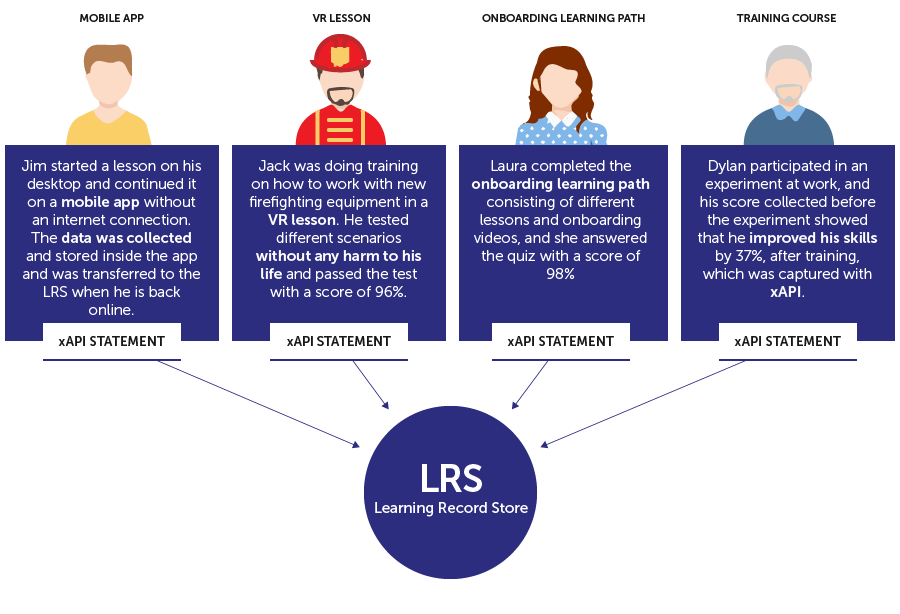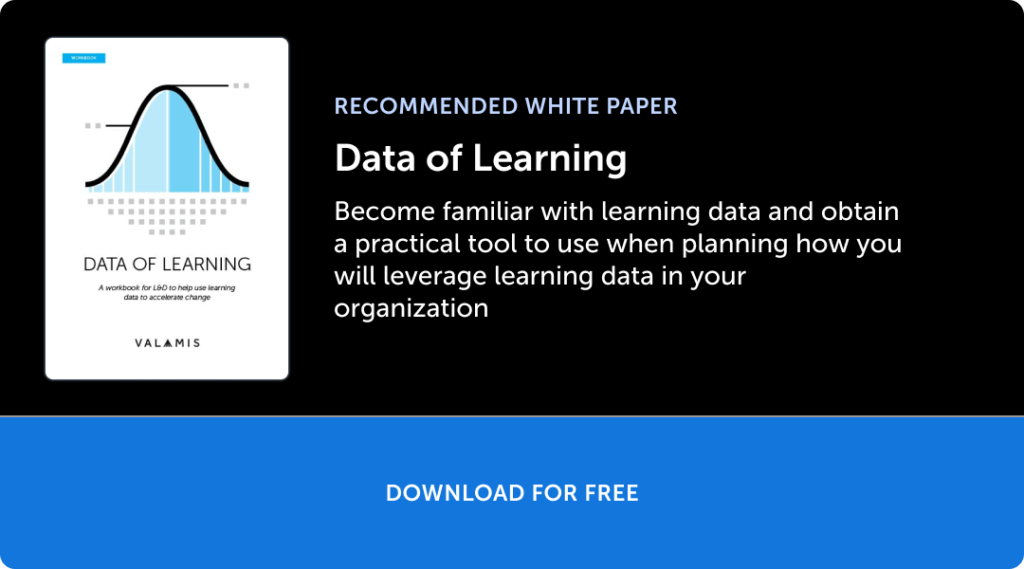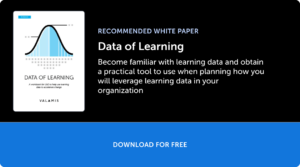In this article, we will discuss the topic of xAPI and its role as the standard for tracking and sharing learning experiences. You will learn about the development of xAPI by Advanced Distributed Learning (ADL) and Rustici Software, its ability to capture data from various sources, and its benefits for organizations in terms of talent management and customer behavior insights. Additionally, we will explore how xAPI facilitates personalized and efficient learning when paired with virtual reality. Throughout the article, we will provide context by comparing xAPI to other specifications such as SCORM and AICC.

Overview of xAPI
xAPI, short for Experience API, is a standard that allows for the tracking, storing, and sharing of learning experiences across different platforms and contexts. It provides a robust framework for collecting and analyzing data related to learners’ activities, enabling organizations to gain valuable insights into the effectiveness of their learning programs.
What is xAPI
xAPI, also known as Tin Can API, is an eLearning specification that was developed by Advanced Distributed Learning (ADL) and Rustici Software in collaboration with the SCORM community. Unlike its predecessors, SCORM (Sharable Content Object Reference Model) and AICC (Aviation Industry Computer-Based Training Committee), xAPI offers a more flexible and comprehensive approach to tracking and sharing learning experiences.
Development of xAPI
The development of xAPI was driven by the need for a more adaptable and modern specification that could capture learning experiences beyond the traditional eLearning environment. SCORM and AICC were limited to tracking activities within a learning management system (LMS), while xAPI allows for the capturing of data from various sources, including mobile devices, simulations, games, and offline learning.
Benefits of xAPI
xAPI offers a range of benefits that make it a preferred choice for organizations looking to enhance their learning and development initiatives.
One of the key advantages of xAPI is that it provides a holistic view of learning activity. Instead of focusing solely on completion and scores, xAPI captures a wide range of data points, such as time spent on different activities, specific actions taken, and even emotional responses. This detailed data gives organizations a deeper understanding of how learners are engaging with the content and can help identify areas for improvement.
Another significant benefit of xAPI is its ability to easily share data within an organization. With xAPI, learning experiences can be tracked across different systems and platforms, allowing for seamless integration and data exchange. This enables organizations to gain a comprehensive overview of their learning initiatives and make data-driven decisions based on real-time information.
Tracking Learning Experiences
Capturing data from various sources
One of the major advantages of xAPI is its flexibility in capturing data from various sources. While traditional specifications like SCORM and AICC relied on the use of an LMS, xAPI allows for the tracking of learning experiences across different devices, applications, and platforms. Whether learners are accessing content on a desktop computer, smartphone, or tablet, xAPI can capture the relevant data and store it in a Learning Record Store (LRS).
xAPI supports a wide range of activities, including online and offline learning, simulations, virtual reality (VR) experiences, and social learning interactions. This enables organizations to track and measure learning in a more comprehensive and meaningful way, providing a wealth of data for analysis and evaluation.
Holistic view of learning activity
Another key feature of xAPI is its ability to provide a holistic view of learning activity. Traditional specifications often focused on completion and test scores, giving only a limited understanding of learners’ engagement and progress. In contrast, xAPI captures detailed information about learners’ interactions and behaviors, offering a more comprehensive picture.
xAPI statements, which are the building blocks of tracking learning experiences, can capture a wide range of data points, including the type of activity, the time spent, the resources used, and even the emotions felt by the learners. This data can be analyzed to gain insights into learners’ preferences, challenges, and overall learning efficacy.
Sharing data within an organization
xAPI’s ability to track and share data within an organization is another significant advantage. With xAPI, learning experiences can be seamlessly integrated across different systems, enabling a unified and comprehensive view of learners’ activities.
By using xAPI-compliant systems, organizations can easily collect and aggregate data from various sources, such as an LMS, content authoring tools, and even external applications. This allows for better coordination and exchange of information between different stakeholders, including instructors, administrators, and learners.
The ability to share data within an organization facilitates collaboration and ensures that everyone involved has access to the most up-to-date and relevant information. This, in turn, enables informed decision-making and the design of more effective learning experiences.

Connecting Learning and Performance
Talent management and development
One of the key benefits of xAPI is its ability to connect learning and performance, making it a valuable tool for talent management and development. By tracking and analyzing learning experiences, organizations can gain insights into the knowledge, skills, and competencies of their workforce.
xAPI allows organizations to capture data on learners’ performance, identifying areas where additional training or support may be needed. This data can be used to develop personalized learning paths, tailored to individual needs and career goals. By aligning learning initiatives with performance objectives, organizations can optimize their talent development strategies and nurture a more skilled and engaged workforce.
Insights into customer behavior
In addition to tracking employee performance, xAPI can also provide insights into customer behavior. By capturing data on how customers engage with learning content and resources, organizations can gain valuable insights into their preferences, challenges, and needs.
For example, xAPI can track customer interactions with online training modules, allowing organizations to analyze which topics or activities are most engaging and effective. This information can be used to refine and enhance learning assets, ensuring that they are tailored to meet the specific needs of the target audience.
By leveraging xAPI’s capabilities, organizations can gain a deeper understanding of their customers and develop more targeted and impactful learning experiences.
Improving learning assets
xAPI’s comprehensive tracking capabilities enable organizations to evaluate the effectiveness of their learning assets. By analyzing data captured by xAPI statements, organizations can identify which resources are most effective in achieving learning objectives and which may need revision or improvement.
This data-driven approach allows organizations to continuously iterate and optimize their learning assets, ensuring that they are relevant, engaging, and impactful. By aligning learning resources with the specific needs and preferences of learners, organizations can enhance the learning experience and drive better learning outcomes.
Analyzing the Impact of Learning Programs
Securing and structuring data
xAPI ensures that data collected from learning activities is secure and structured. xAPI statements are written in a standardized format, which makes it easier to store, analyze, and retrieve data. This structured approach allows organizations to easily aggregate and analyze data from different sources, providing a comprehensive view of the impact of their learning programs.
One of the key components of xAPI is the Learning Record Store (LRS), which is the repository for storing xAPI statements. The LRS serves as a central hub for collecting and managing data, enabling organizations to securely store and access information related to learners’ experiences and achievements.
Analyzing learning program impact
With xAPI, organizations can analyze the impact of their learning programs more effectively. By capturing a wide range of data points, xAPI provides organizations with rich and detailed information about learners’ activities, progress, and achievements.
This data can be analyzed to evaluate the effectiveness of specific learning interventions, identify areas for improvement, and make data-driven decisions. By measuring learning outcomes and performance indicators, organizations can determine whether their learning programs are achieving the desired results and adjust their strategies accordingly.
Importance of Learning Record Store (LRS)
The Learning Record Store (LRS) plays a crucial role in the implementation of xAPI. It serves as the central repository for storing and managing xAPI statements, providing organizations with a secure and scalable solution for tracking and analyzing learning experiences.
The LRS allows organizations to store and access data related to learners’ activities, achievements, and interactions across different systems and platforms. It provides a centralized and standardized approach to data management, enabling organizations to have a comprehensive view of learners’ experiences and progress.
The LRS also facilitates data interoperability, ensuring that xAPI-compliant systems can exchange and share data seamlessly. This interoperability enables organizations to integrate their learning initiatives with other systems, such as HR management systems, talent management platforms, or customer relationship management (CRM) systems.

Integration with Virtual Reality (VR)
Using xAPI with VR
Virtual Reality (VR) has gained popularity in recent years as a powerful tool for creating immersive and engaging learning experiences. With xAPI, VR can be seamlessly integrated into the tracking and analysis of learning activities, enhancing the effectiveness of training programs.
xAPI enables the capture of data from VR experiences, allowing organizations to track learners’ interactions and behaviors within virtual environments. This data can include information such as the learners’ movements, responses, and decisions, providing valuable insights into their engagement and performance.
By using xAPI with VR, organizations can create personalized and efficient learning experiences. Learners can navigate virtual environments at their own pace, receiving real-time feedback and guidance based on their actions and decisions. This personalized approach ensures that learners are actively engaged and motivated, leading to better learning outcomes.
Benefits of VR in training
VR has several advantages over traditional training methods. It provides a realistic and immersive environment that can simulate real-world scenarios, allowing learners to practice and apply their skills in a safe and controlled setting.
VR training also offers the advantage of consistency and repeatability. Learners can revisit VR simulations multiple times, reinforcing their knowledge and skills without the limitations of time and resources associated with traditional training methods.
Additionally, VR can create a sense of presence and emotional engagement, enhancing the overall learning experience. Learners can experience complex situations and emotions in a controlled environment, building empathy and understanding.
When combined with xAPI, VR training becomes an even more powerful tool. The ability to track and analyze learners’ interactions within VR environments enables organizations to evaluate the effectiveness of VR training programs and make data-driven decisions.
Personalized and efficient learning with metrics
By integrating xAPI with VR, organizations can create personalized and efficient learning experiences. xAPI allows for the collection of granular data on learners’ interactions and behaviors within VR environments, enabling organizations to tailor the learning experience to individual needs and preferences.
With xAPI, organizations can measure key performance indicators (KPIs) and use the data to provide real-time feedback and guidance to learners. This personalized approach ensures that learners receive the support and resources they need to be successful, leading to more efficient and effective learning outcomes.
The ability to track and evaluate metrics also allows organizations to identify areas for improvement and optimize their VR training programs. By analyzing data on learners’ performance and engagement, organizations can make data-driven decisions and continuously iterate and enhance their training initiatives.
Comparison with Other Specifications
Introduction to SCORM, AICC, and xAPI
SCORM, AICC, and xAPI are all specifications used to measure the effectiveness of eLearning environments. Each specification has its own strengths and limitations, and organizations need to consider their specific requirements when deciding which one to use.
SCORM, or Sharable Content Object Reference Model, was introduced in the late 1990s and has been widely adopted in the eLearning industry. It provides a standardized way to package and deliver eLearning content, ensuring compatibility and interoperability between different systems. SCORM focuses on course-level tracking and assessment, with a strong emphasis on completion and test scores.
AICC, or Aviation Industry Computer-Based Training Committee, was one of the earliest eLearning specifications, developed in the 1980s. AICC also focuses on tracking and delivery of eLearning content, with an emphasis on compatibility and interoperability. However, AICC is more limited in its tracking capabilities compared to SCORM and xAPI.
xAPI, the newest of the three specifications, offers a more flexible and comprehensive approach to tracking and sharing learning experiences. Unlike SCORM and AICC, xAPI is not limited to tracking activities within an LMS. It allows for the capturing of data from a wide range of sources, including mobile devices, simulations, games, and offline learning.
Key differences between SCORM, AICC, and xAPI
One of the key differences between SCORM, AICC, and xAPI is the level of detail and granularity in tracking. While SCORM and AICC typically focus on course-level tracking and completion, xAPI goes beyond that, capturing a wide range of data points, including specific actions taken, time spent on different activities, and even emotional responses.
Another difference is the flexibility and adaptability of xAPI. Unlike SCORM and AICC, which require the use of an LMS, xAPI allows for the tracking of learning experiences across different devices, applications, and platforms. This makes xAPI a more future-proof and scalable solution, as it can accommodate new technologies and learning modalities.
Additionally, xAPI offers better interoperability and data sharing capabilities compared to SCORM and AICC. With xAPI, organizations can integrate their learning initiatives with other systems, such as HR management systems or talent management platforms, allowing for a seamless exchange of data and information.
Advantages of xAPI over SCORM and AICC
xAPI offers several advantages over SCORM and AICC, making it the preferred choice for organizations looking for a more comprehensive and flexible solution for tracking and sharing learning experiences.
One of the key advantages of xAPI is its ability to capture data from a wide range of sources. While SCORM and AICC are limited to tracking activities within an LMS, xAPI allows for the capturing of data from mobile devices, simulations, games, and offline learning. This flexibility enables organizations to track and measure learning in a more meaningful and comprehensive way.
Another advantage of xAPI is its ability to provide a holistic view of learning activity. Unlike SCORM and AICC, which focus on completion and scores, xAPI captures a wide range of data points, such as time spent on different activities, specific actions taken, and even emotional responses. This detailed data provides organizations with valuable insights into learners’ engagement, preferences, and challenges, enabling them to make data-driven decisions.
Furthermore, xAPI offers better interoperability and data sharing capabilities. With xAPI, organizations can integrate their learning initiatives with other systems and platforms, allowing for seamless data exchange and collaboration. This interoperability ensures that everyone involved has access to the most up-to-date and relevant information, facilitating better coordination and decision-making.
In conclusion, xAPI is a powerful industry standard for tracking and sharing learning experiences. Its flexibility, adaptability, and comprehensive tracking capabilities make it a preferred choice for organizations looking to enhance their learning and development initiatives. By leveraging xAPI, organizations can gain valuable insights into learners’ activities, improve their learning assets, and ultimately drive better learning outcomes.





